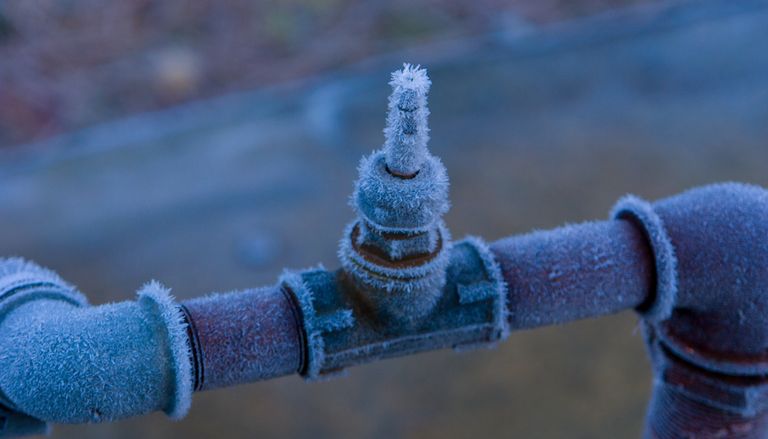Ways to Protect Pipes from Freezing: Professional Guidance
Ways to Protect Pipes from Freezing: Professional Guidance
Blog Article
This post down the page in relation to Winter Plumbing Precautions: Preventing Frozen Pipes is without a doubt interesting. Check it out yourself and see what you think of it.

Cold weather can wreak havoc on your pipes, especially by freezing pipelines. Right here's how to avoid it from happening and what to do if it does.
Intro
As temperature levels drop, the danger of frozen pipelines boosts, possibly leading to expensive repair services and water damage. Comprehending just how to stop icy pipes is vital for homeowners in cold climates.
Prevention Tips
Protecting vulnerable pipelines
Wrap pipes in insulation sleeves or make use of heat tape to secure them from freezing temperature levels. Concentrate on pipelines in unheated or outside areas of the home.
Home heating techniques
Keep interior rooms appropriately heated up, particularly areas with pipes. Open cupboard doors to allow warm air to flow around pipes under sinks.
Just how to identify icy pipes
Try to find reduced water flow from taps, unusual smells or sounds from pipelines, and noticeable frost on subjected pipelines.
Long-Term Solutions
Structural changes
Think about rerouting pipes far from exterior walls or unheated areas. Include additional insulation to attics, basements, and crawl spaces.
Updating insulation
Buy high-quality insulation for pipelines, attic rooms, and walls. Appropriate insulation assists keep regular temperature levels and minimizes the danger of icy pipelines.
Securing Exterior Plumbing
Garden hose pipes and outside faucets
Detach and drain yard tubes prior to winter season. Set up frost-proof spigots or cover outside taps with shielded caps.
Recognizing Icy Pipelines
What causes pipelines to ice up?
Pipelines freeze when revealed to temperatures listed below 32 ° F (0 ° C) for prolonged durations. As water inside the pipelines ices up, it expands, taxing the pipeline wall surfaces and possibly creating them to rupture.
Dangers and problems
Frozen pipelines can lead to water interruptions, building damages, and pricey repairs. Ruptured pipes can flooding homes and create comprehensive structural damage.
Indicators of Frozen Piping
Recognizing frozen pipelines early can prevent them from breaking.
What to Do If Your Pipes Freeze
Immediate actions to take
If you presume icy pipes, keep taps available to ease stress as the ice thaws. Use a hairdryer or towels soaked in hot water to thaw pipes gradually.
Conclusion
Preventing icy pipes calls for proactive steps and quick feedbacks. By comprehending the reasons, indicators, and preventive measures, house owners can safeguard their pipes throughout cold weather.
5 Ways to Prevent Frozen Pipes
Drain Outdoor Faucets and Disconnect Hoses
First, close the shut-off valve that controls the flow of water in the pipe to your outdoor faucet. Then, head outside to disconnect and drain your hose and open the outdoor faucet to allow the water to completely drain out of the line. Turn off the faucet when done. Finally, head back to the shut-off valve and drain the remaining water inside the pipe into a bucket or container. Additionally, if you have a home irrigation system, you should consider hiring an expert to clear the system of water each year.
Insulate Pipes
One of the best and most cost-effective methods for preventing frozen water pipes is to wrap your pipes with insulation. This is especially important for areas in your home that aren’t exposed to heat, such as an attic. We suggest using foam sleeves, which can typically be found at your local hardware store.
Keep Heat Running at 65
Your pipes are located inside your walls, and the temperature there is much colder than the rest of the house. To prevent your pipes from freezing, The Insurance Information Institute suggests that you keep your home heated to at least 65 degrees, even when traveling. You may want to invest in smart devices that can keep an eye on the temperature in your home while you’re away.
Leave Water Dripping
Moving water — even a small trickle — can prevent ice from forming inside your pipes. When freezing temps are imminent, start a drip of water from all faucets that serve exposed pipes. Leaving a few faucets running will also help relieve pressure inside the pipes and help prevent a rupture if the water inside freezes.
Open Cupboard Doors
Warm your kitchen and bathroom pipes by opening cupboards and vanities. You should also leave your interior doors ajar to help warm air circulate evenly throughout your home.

I ran across that write up on 6 Ways to Prevent Frozen Pipes while surfing the internet. Sharing is nice. You never know, you may just be helping someone out. I treasure your readership.
Call Today Report this page